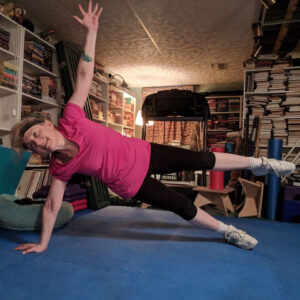It’s no secret that I’m a big fan of tracking things. For my dogs, I track their training. For my goals, I track my progress. Every step toward completion is a big deal, so I write about every step. The same goes for my fitness goals. If I want to go faster or lift heavier weights, I need to log what I’m doing now as a benchmark for the future. We all start somewhere, and we all have different journeys in fitness. And as part of our healthy aging, all the experts say we must do aerobic exercise and strength work. So, write what you do. To start with, for the first week, just note how many days you were active. Then when you decide on a fitness program, write what you do every day you exercise.
It doesn’t have to be fancy
It doesn’t have to be fancy. Just a cheap spiral notebook works. Write down the time, the place, what you did, and for how long. It helps to note other details, too. If you’re running or walking, your speed and distance. If you’re doing strength work, note the exercise, the poundage and the number of repetitions and sets.
But fancy is good
Your journal, or tracker, can be as fancy as you like. I created one that combines pretty much everything I track: goals, nutrition, mindset, and fitness. And I also created individual sheets for different purposes. There’s one for fitness, another for nutrition, another for mindset, and a series for achieving any goal, like achieving the full Side Plank Star. The thing to watch for when you buy a journal or download a tracker sheet is to make sure that you actually do write what you do. I’ve been known to let the journal sit on my desk. I admire it and say, “I should really write in there,” and then still let it sit. But now I make sure I pick up my pen and write.
The NIH says write what you do
Why use a tracker for fitness? The National Institute on Aging suggests that tracking your fitness is a great way to stay motivated to exercise. By writing what you do, you can see your progress and continue asking yourself important questions. Questions like, “Why do I want to stay active?” And “What activities are important to me now, and what do I want to continue to do in the future as I age?” Your journal is also a great way to assess what kind of barriers you see to your mobility, and figure out a way to remove those barriers.


